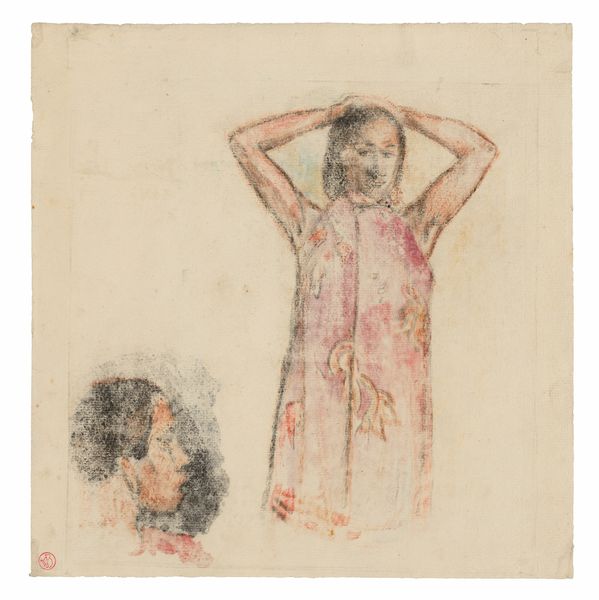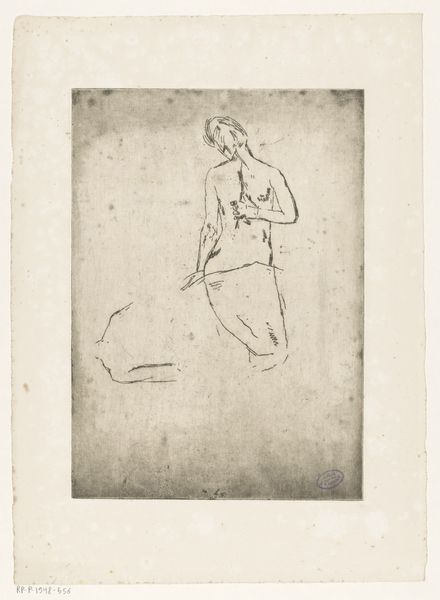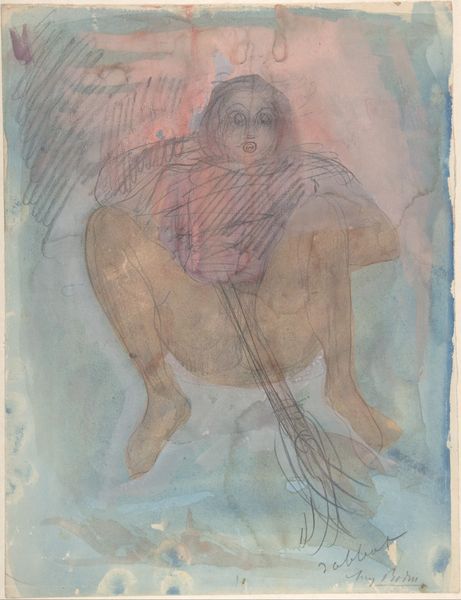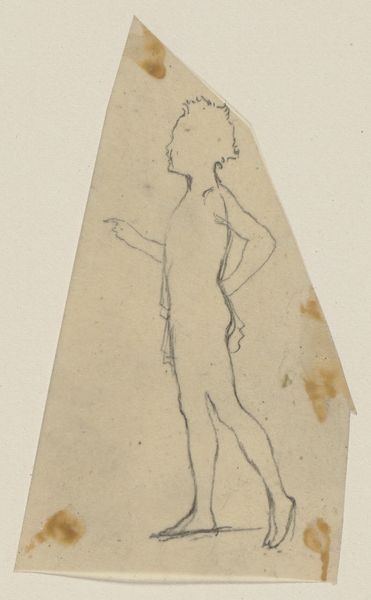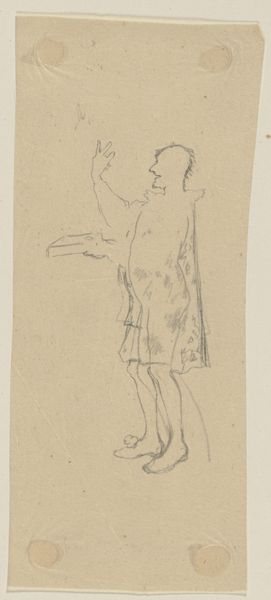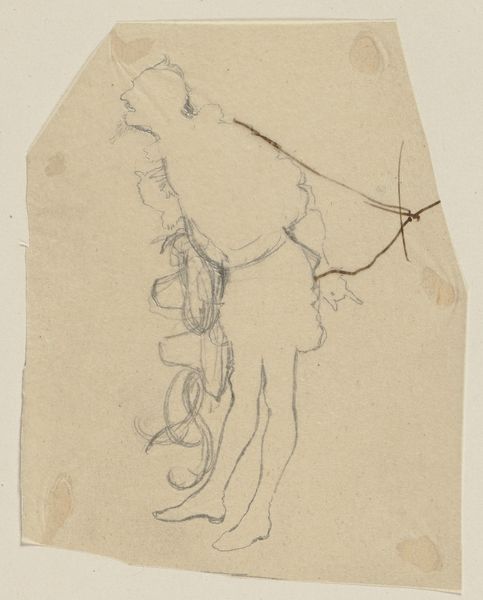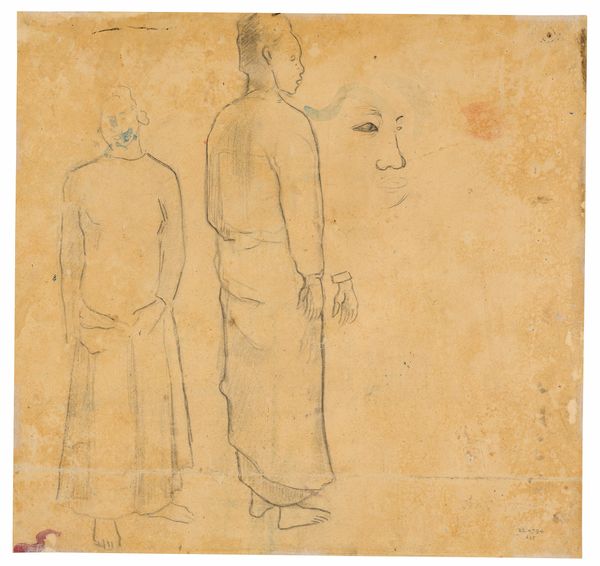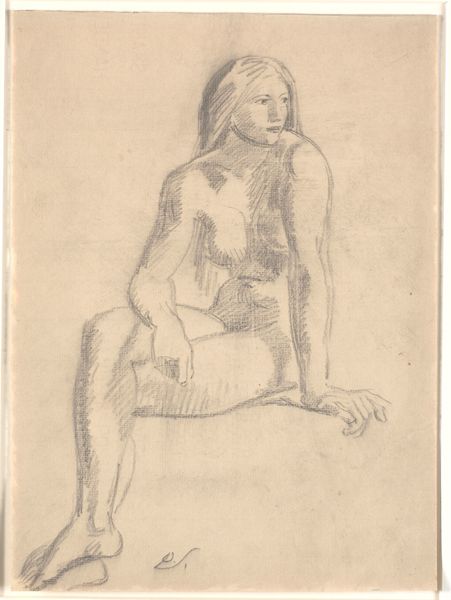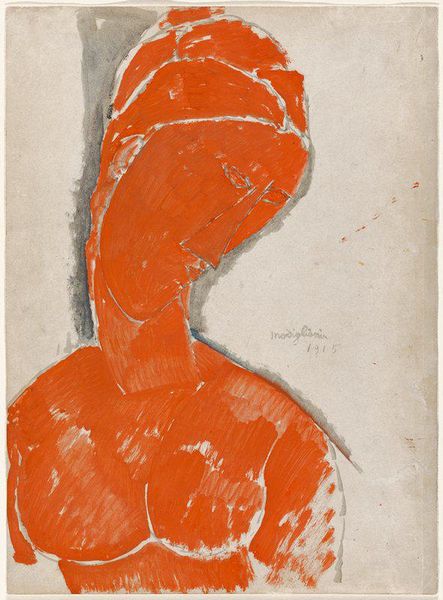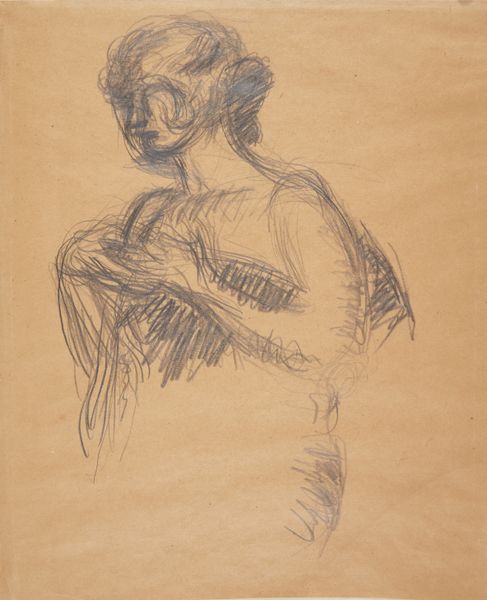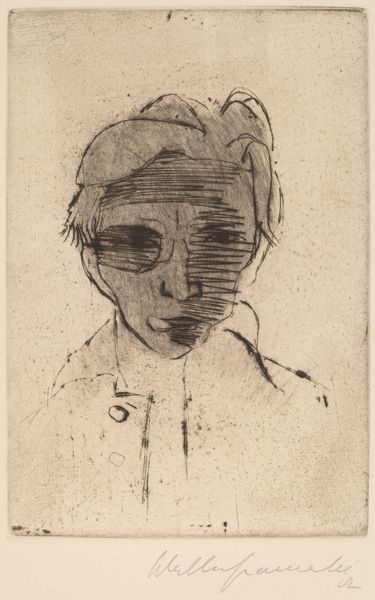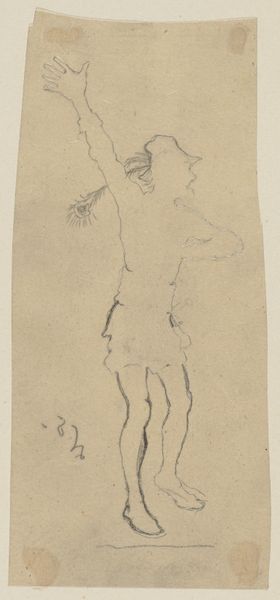
Dimensions: 299 × 198 mm
Copyright: Public Domain
Curator: What immediately strikes me about this drawing is its vulnerability; the rawness of the pastel on paper conveys such an intimate feeling. Editor: Indeed. What you’re perceiving there comes from a specific source. What we have here is Paul Gauguin's "Tahitian Girl in a Pink Pareu," created circa 1894. It's a delicate portrait rendered with pastel and watercolor on paper, currently residing here at The Art Institute of Chicago. Curator: It’s interesting how Gauguin simplifies the form; look at the starkness of the face and how the pareu merges with the figure. He's distilling her down to almost an essence of island life, wouldn't you agree? It seems he tries to use color to create an alluring surface rather than showing respect to her social position. Editor: Well, the very act of rendering her image already involves him in a much deeper, dirtier social structure, don't you think? But focusing on the drawing, one cannot overlook the way he uses the pastel to build depth and volume, that’s crucial. The rapid strokes around her body create energy that draws the eye, a captivating play between the raw materials and his vision. Curator: That 'energy' is actually more related to the economical and colonial dynamic where Western desire transforms native life into consumable images. But your analysis also invites questions: who produced the paper and pastels and under which labor and political conditions? I wonder if it all relates back to an earlier European context than Tahiti? Editor: Your argument makes sense and gives this particular artwork other relevant historical connections, but I am inclined to analyze this through his post-impressionist framework, where the emphasis lies on conveying emotion through distorted forms and flattened perspectives. What that achieves formally is, dare I say, unique here, for its color palette that has an undeniable warmth. Curator: You focus on the formal properties of color; I think there is still an exploitation of culture by consumption—especially when the creation is later brought back into and commodified for western culture consumption. Editor: You give me things to think about, no doubt, about labor, material production, colonialism, class. And perhaps this kind of approach could give even more nuance on how we look at this pastel from a whole new, refreshed perspective. Thanks for joining me on this exploration!
Comments
No comments
Be the first to comment and join the conversation on the ultimate creative platform.
